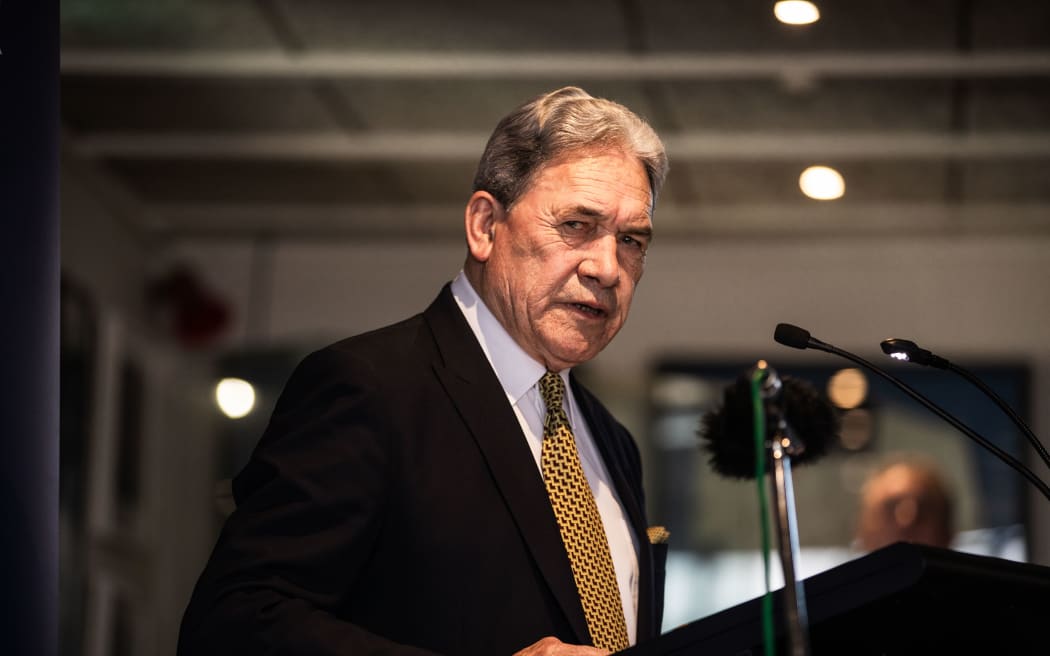Another year, another failed climate summit. Running into overtime – the United Nations Conference of Parties 28 (COP28) finally came to a deeply disappointing close on Wednesday 13 December.
Yet, even COP28’s most ambitious options for a fossil fuel phase-out would still have flopped. The UN conference was never going to be the route to climate justice.
COP28 – another cop out
Firstly, the good news. After 28 consecutive climate summits, and global governments’ abject failure to stymie the climate crisis, surely we can finally dispense with the notion that the corporate-captured political class will save us.
Then, buckle up for the bad news: governments utterly failed to get the world out of the emergency room. Predictably – after almost three decades of derailed decisions – they fell far short of negotiating anything like a concrete agreement. The final text reads like a wrap sheet of weasel words designed to evade real action on tackling climate breakdown.
Crucially, the headline failure lies in what it misses out. Climate campaigners were calling for a:
a full, fast, fair and funded fossil fuel phase-out
However, the final agreement fudged even the barest mention of this “phase-out”, dropping the framing entirely.
In other words, it was the biggest cop out since – well – the last climate conference in November 2022. And yet, this is hardly surprising. Bad faith governments have scuppered every COP since COPs began. It’s why, from their inception in 1995 to now, global greenhouse gas emissions have skyrocketed, the Earth has warmed to 1.3°c, and climate supercharged disasters have struck apace.
Who could have guessed that a climate conference led by the head of the host country’s oil and gas company would crash and burn? Certainly not the countless climate activists, organisations, and communities that voiced their (now sadly vindicated) concerns from the very start of his appointment. It’s the kind of “I told you so” moment you wished would never materialise – but inevitably did, just to spite you; to spite all of us. As it stands then: the world is well and truly fucked.
Phase-out fudge
By Friday 8 December, negotiators were floating a number of phase out options in the draft text.
At this point, there was a no frills fossil fuel phase-out statement on the table, proposing this “in line with the best available science”. The Republic of the Marshall Islands-led High Ambition Coalition (HAC) and New Zealand purportedly backed this approach. The HAC includes some Global North nations such as France and Spain, a few African states, and a number of Pacific Island nations. A similar option mooted this phase out in the context of the Intergovernmental Panel on Climate Change’s (IPCC) “pathways” to 1.5°c.
Wordier, weaker versions hedged the phase-out with some predictably slippery caveats. Not least among these was “unabated” – a favourite Global North get-out clause. It would permit fossil fuels, so long as operators utilise unproven technologies like carbon capture and storage (CCS) to syphon off emissions.
Meanwhile, some made reference to ‘net zero’, offering another convenient loophole. As the Canary’s Tracy Keeling has previously pointed out in advance of COP26:
Net Zero doesn’t mean real zero carbon emissions. It’s essentially a plan to ensure the amount of carbon emitted by a country or organisation isn’t more than the amount of carbon they ensure is removed from the atmosphere. 2050 is the year most Net Zero ambitions centre on.
But Net Zero calculations generally include unrealistic claims about nature’s carbon-storing capacity, uncertain technologies, and highly contested energy ‘solutions’. What they often lack, meanwhile, is a plan to dramatically lower emissions by reducing and ultimately ending fossil fuel use.
Invariably, the text cycled through different iterations to finally land on an altogether different statement:
Transitioning away from fossil fuels in energy systems, in a just, orderly and equitable manner, accelerating action in this critical decade, so as to achieve net zero by 2050 in keeping with the science
Like many climate campaigners and frontline communities, executive director of 350.org May Boeve was understandably frustrated at this outcome. She lamented that the fossil fuel transition statement:
is surrounded by so many loopholes that it has been rendered weak and ineffectual
Fossil fuel friends in the room
Of course, it was the usual suspects stifling this key commitment to meaningful climate action.
For one, fossil fuel companies stacked the summit full to the rafters with lobbyists. It’s nothing new, but the scale surpassed previous summits by some margin. COP26 in Glasgow welcomed 503 fossil fuel lobbyists into the fray. Then, at COP27, the number shot up to 636. This time, COP28 officials granted 2,456 corporate fossil fuel lobbyists access to the conference. The fact that fossil fuel company presence has been a long-time feature of these climate deliberations should send alarm bells ringing.
Meanwhile, leading oil-producing nations were the obvious malign actors who put their fossil fuel filibustering on full display at this year’s COP. As Damian Carrington picked up for the Guardian, the Organization of the Petroleum Exporting Countries (OPEC) lobbied its member nations to:
proactively reject any text or formula that targets energy, ie fossil fuels, rather than emissions
So, it seems the fossil fuel majors’ government lackeys brought talk of a phase-out to a grinding halt. Former US vice president and environmentalist Al Gore called out OPEC nations for their role in wrecking the agreement:
COP28 is now on the verge of complete failure. The world desperately needs to phase out fossil fuels as quickly as possible, but this obsequious draft reads as if OPEC dictated it word for word. It is even worse than many had feared. It is “Of the Petrostates, By the Petrostates…
— Al Gore (@algore) December 11, 2023
Looking on high from greenhouse gas-gilded towers
Yet this is not to let other fossil fuel-powered economies off the hook either. Some highlighted the hypocrisy of Gore playing the blame game coming from the US – with its long tradition of jeopardising climate negotiations:
The entire diversion onto to only OPEC is incorrect, as it completely overlooks US that is largely responsible for scuppering all sorts of #Cop28 language & deals. Let’s not forget its ongoing history of derailing #ClimateJustice. The US does not want #FossilFuelPhaseOut. https://t.co/6hDs8VQfA0
— Prof. Farhana Sultana (@Prof_FSultana) December 11, 2023
Additionally, as 350.org highlighted, while some large oil producing nations like the US seemed to back the more ambitious agreement:
the text they are proposing could actually hinder climate goals by obscuring the meaning of “phaseout” and enshrining dangerous distractions like carbon capture and storage (CCS), hydrogen, and nuclear in the phaseout text.
Ostensibly, the US and other fossil fuel-based economies hold up the pretence of backing climate action. In reality however, they push proposals riddled with loopholes that throw the industry a lifeline. Evidently, they’re content to hide behind countries frank enough to wear their climate betrayal on their sleeve.
Moreover, quite how the US – the largest historic emitter of greenhouse gas emissions with plans to expand oil and gas infrastructure – can credibly lecture the world on phasing out fossil fuels is anyone’s guess. Of course, the same goes for other large fossil fuel economies burgeoning their already outsized emissions.
Words into action
What’s more, for all their phase-out bluff these fossil fuel industrialised states persistently fail to actually walk the walk.
This is the crux. Even supposing the parties had agreed to phase-out fossil fuels – using whatever qualifiers – implementation is where it really counts. And when it comes to this, governments the world over are falling well short.
According to Climate Action Tracker (CAT) – a scientific project that measures countries’ progress against the legally binding Paris Agreement goals – no nation is currently on course to meet these targets. Moreover, CAT has calculated that global government’s current 2030 targets will:
lead to 2.5°C of warming by the end of the century: 0.1°C higher than last year.
Effectively, countries aren’t living up to their Paris promises. Now, the corporate media are publishing article after article parroting COP28 president sultan Al Jaber’s praise for the latest “historic” agreement. Paris too was lauded as “historic”, but when push has come to shove, governments aren’t actually meeting their warm words with concerted action.
Global North failing the just transition
Ultimately, the options on the table were already a low bar. Head of global political strategy at Climate Action Network (CAN) International Harjeet Singh highlighted the vital wording COP28 negotiators missed out from the very start:
NEW GST text #COP28:
FOSSIL FUELS:
The new GST text retains the fossil fuel phase-out option but does not incorporate the proposal by developing countries to add the terms 'just and equitable' and 'developed countries taking the lead.'
Without equity, it is neither fair… pic.twitter.com/sVaRZhhCDr
— Harjeet Singh (@harjeet11) December 8, 2023
In short, without the necessary transfer of climate finance from the Global North to the Global South, a just transition for poorer nations will not be possible.
As I’ve pointed out before, historic polluters have a particular responsibility to phase-out fossil fuels, while financing the green transition of poorer nations. It’s what the UN process calls “common, but differentiated responsibilities” (CBDR), but rich countries have bent over backwards to avoid them.
Notably for instance, they failed to fork out the $100bn in climate finance by 2020 that they had pledged to poorer nations at COP15 in 2009.
According to the Organisation for Economic Co-operation and Development (OECD), countries may have finally delivered this in 2022. However, governments provided over two-thirds of the public finance through loans. What’s more, the costs of adaptation to the climate crisis and mitigation from its impacts has spiralled. A 2022 study estimated poorer nations would need $2tn in funding by 2030.
To add insult to injury, as the Global North nations and institutions saddle poorer countries with unjust debt, they regularly force them into servicing it through fossil fuels – locking them into climate-wrecking infrastructure.
At the end of the day, COP28 was always set to be another climate farce. COP28 negotiations could only ever lead to an entirely non-binding wish-list for climate. Fossil fuel phase-out or not, with this new agreement we might hold the receipts, but there’ll be no replacement for a habitable planet.
Feature image via COP28 UAE/Youtube screengrab.
This post was originally published on Canary.


 not any more…
not any more…


 (@HelenMorganMP)
(@HelenMorganMP) 
 (@MrMatthewTodd)
(@MrMatthewTodd) 
 Molly (@GreenPartyMolly)
Molly (@GreenPartyMolly) 
